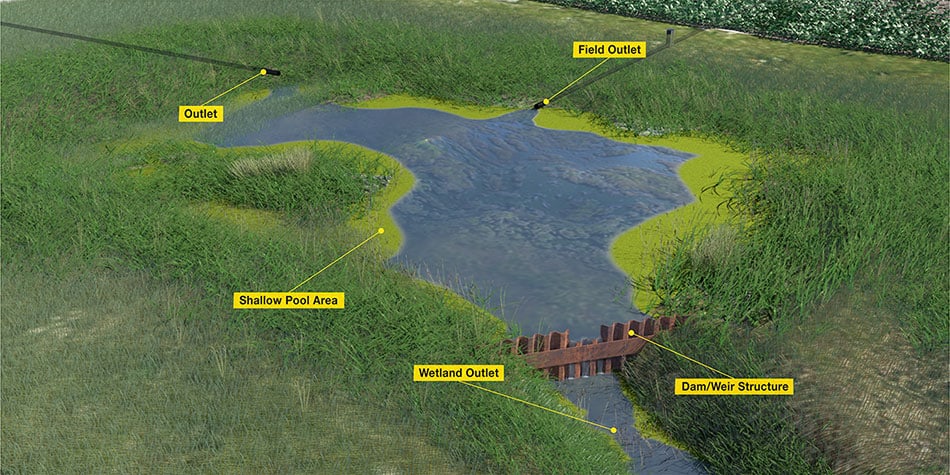
Denitrifying Wetland
Practice Overview
Wetlands are strategically placed on low-land areas of a watershed where runoff naturally flows, and where tile water can outlet into. These unproductive acres can be utilized to maximize their natural nutrient use capabilities.
Benefits
- Denitrification (20% to 50%)
- Phosphorus reduction
- Sediment capture
- Wildlife habitat
- Flood storage
How It Works
Tile (county or private) outlets into the wetland where vegetation in the shallow pool provides an ideal environment for nutrient consumption. Water level is controlled by an outlet weir or control structure depending on the design. Low, wet, unproductive acres are targeted as natural locations for wetlands. Here they can be most effective at capturing runoff and drainage water and allowing the natural ecosystem to treat the nutrients. Upland areas can be sufficiently drained while limiting downstream water quality or quantity impacts.
Tile Zone Wetlands can outlet back into the county or district tile. Break Point Wetlands collect and treat drainage (tile or open ditch) water before it enters a larger ditch system.
Installation Considerations
- Multiple styles can be utilized depending on watershed characteristics
- Wetland area is typically 0.5% to 2% of watershed/drainage area
- Ex. 500-acre watershed would need about a 5-acre wetland
- Shallow pool depth
- Half of pool area must be <2’ deep
Costs
- Installation: $42,000 to $80,000
- $1.32 per lb of N removed